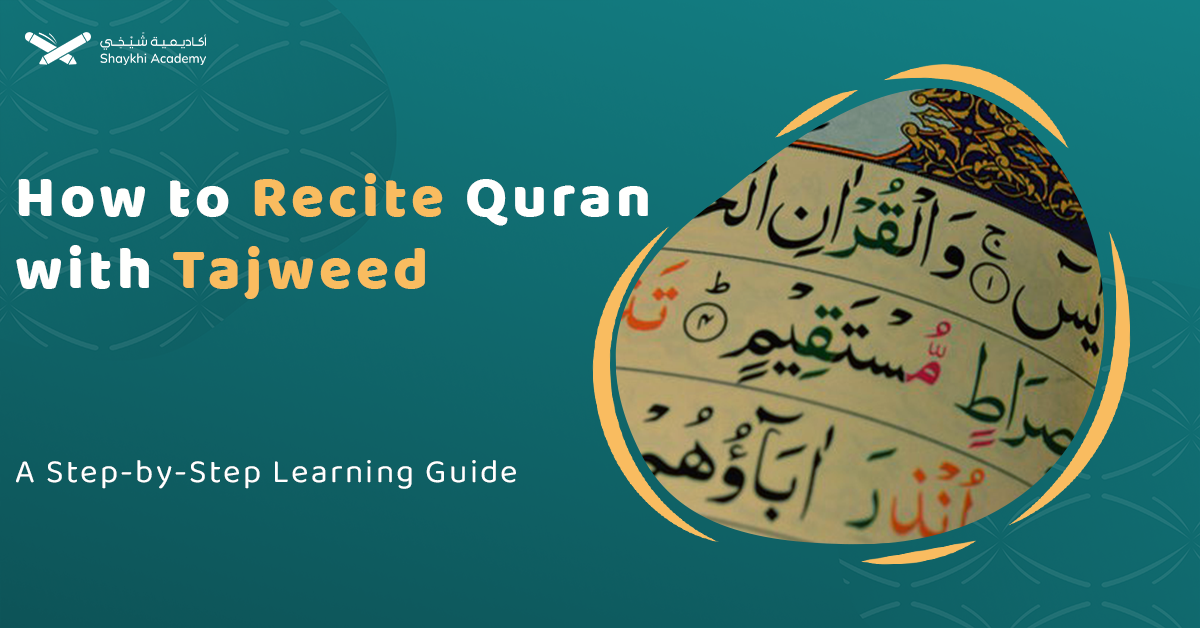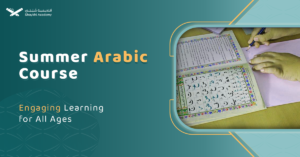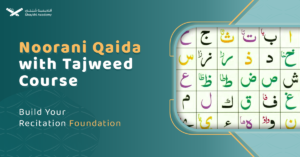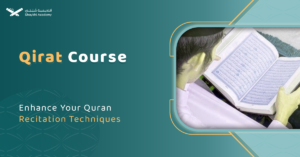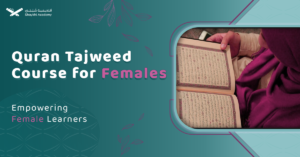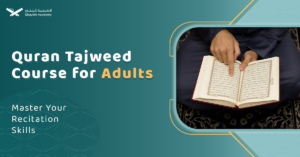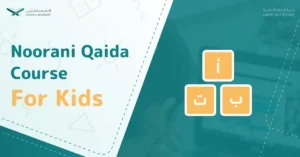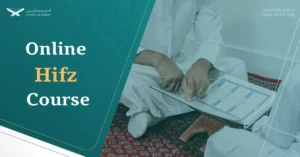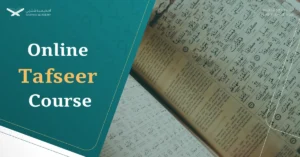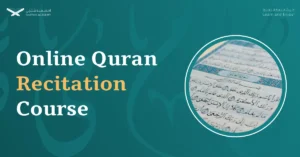The Holy Quran is a great book and reciting it correctly is a manner for each Muslim. Tajweed rules were written and saved for this purpose so that the Quran could be recited correctly. “Tajweed” means “to improve”, so these rules are made to improve your recitation which helps you understand the Quran correctly and understand the beauty of each meaning. In this article, we will guide you through the rules, techniques, and tools to recite the Quran with Tajweed correctly and easily.
Introduction To Tajweed:
Tajweed is the science that has rules of pronunciation and articulation of reciting the Quran and it literally means “to improve”. This science has rules applied during recitation to give every letter its due characteristics in different situations.
Learning Tajweed rules helps you to recite the Quran correctly and understand the meaning of words. Tajweed covers how the Arabic alphabet is pronounced, when to stop or continue, when to elongate the pronunciation and many other rules.
Tajweed was first learned by indoctrination from Prophet Muhammad (PBUH) as he recited the Quran with Tajweed. Then this science was passed down from one generation to another till it was written down in the 2nd century of the Hijrah.
How to Recite The Quran Properly?
Reciting the Quran with Tajweed is very important to have spiritual contact with Allah (SWT). Proper recitation involves the correct application of Tajweed rules. Here are some practical steps to recite the Quran properly.
1- Understand the Importance of Proper Recitation
The Quran is Allah’s words to the whole world and proper recitation helps us to understand the Quran correctly and be guided as Allah (SWT) said:
“Or a little more; And recite the Qur-ān In slow, measured rhythmic tones.” [Muzzammil 73:4]
2- Learn the Rules of Tajweed
Tajweed not only helps you to accurately pronounce each letter but also enhances the spiritual experience by improving the understanding of the Quran. Also, the correct application of the Tajweed rules in Salah is essential. It has several rules that govern the pronunciation of Arabic letters, the characteristics of letters, and the articulation points of letters.
A- Characteristics of Letters
Each Letter in Arabic has its own characteristics and articulation point. Some letters may share the same articulation point, which is why each letter is given a unique characteristic to distinguish it from the others. For example, some letters have Shaddah while others have Sukoon. This in Tajweed is known as Sifaat Al-Huroof.
B- Pronunciation of each Letter
Arabic language contains 28 letters and the pronunciation of each letter in the Arabic language differs in sound. Some letters come from the throat and others from the mouth. Learning How to Pronounce Arabic Letters? will help you to recite the Quran correctly.
C- Makharj Al Huroof
Makharj Al Huroof differs in the articulation point of each one. It is important to learn the correct articulation point to pronounce the letter. Here is the articulation point for each Arabic letter:
| Letter | Articulation Point | Word Example |
| Alif | Throat | أحمدAhmed |
| Ba | Lips | بلالBelal |
| Ta | Tip of Tongue | تسنيمTasneem |
| Tha | Tip of Tongue | ثوبThowb (Cloth) |
| Jim | Roof of Mouth | جمالGamal |
| Ha | Throat | حصانHesaan (Horse) |
| Kh | Throat | خبزKhobz (Bread) |
| Dal | Tip of Tongue | دلوDalw (Bucket) |
| Dhal | Tip of Tongue | ذئبZe’ab (Wolf) |
| Ra | Tip of Tongue | رسالةResala (Message) |
| Zay | Tip of Tongue | زينبZeinab |
| Sin | Roof of Mouth | سُلَمSolam (Stairs) |
| Shin | Roof of Mouth | شمسShams (Sun) |
| Sad | Throat | صاروخSarokh (Rocket) |
| Dad | Throat | ضفدعDofda’a (Frog) |
| Ta | Throat | طريقTareek (Road) |
| Za | Throat | ظبيZabey (Gazelle) |
| Ain | Throat | عينAin (Eye) |
| Ghain | Throat | غيمةGhaima (Cloud) |
| Fa | Lips | فأسFais (Axe) |
| Qaf | Back of Tongue | قلمQalam (Pen) |
| Kaf | Back of Tongue | كتابKetab (Book) |
| Lam | Tip of Tongue | ليليLayla |
| Mim | Lips | محمدMuhammad |
| Noon | Tip of Tongue | نورNoor (Light) |
| Ha | Throat | هبةHeba (Gift) |
| Waw | Lips | ولدWalad (Boy) |
| Ya | Palate | ياسرYasser |
There are many other rules in Tajweed like Noon Sukoon and Tanween rules, Mim Sakin rules, Qalqalah, Ghunna, and Madd. You can learn more through Tajweed Classes at Shaykhi Academy.
3- Listen to Qualified and Renowned Reciters
Listening to Qualified reciters and trying to read with them in the same melody and rhythm will help you acquire and know how to apply Tajweed rules properly and this technique is called “Indoctrination”.
Notable Qaris include:
A- Sheikh Mahmoud Khalil Al-Hussary
Sheikh Mahmoud Khalil al-Hussary (September 17, 1917 – November 24, 1980)also known as Al-Hussary, was an Egyptian reciter widely acclaimed for his accurate recitation of the Quran.
B- Sheikh Abdul Basit Abdul Samad
Abdul Basit Muhammad Abdus Samad (1927 – 30 November 1988) was an Egyptian Quran reciter and Hafiz.
C- Sheikh Muhammad Siddiq Al-Minshawi
Muhammad Siddiq Al-Minshawi (20 January 1920 – 20 June 1969), known simply as Al-Minshawi, was an Egyptian Quranic reciter and Hafiz.
4- Use a Tajweed Mushaf
A Tajweed Mushaf is a Quran with color-coded text to help you differentiate between Tajweed rules. It is an excellent choice at the beginning of your learning journey.
5- Online Tajweed Tools and Mobile Apps
Use online Tajweed tools which provide learners the opportunity to study Tajweed at their own pace. They offer comprehensive courses and interactive features. Mobile apps also made it easier for learners as there are now several apps available that offer lessons and tutorials. You can find 20 Apps to learn the Quran with Tajweed here. Technology has made Tajweed education more accessible and convenient for learners. After learning Tajweed it’s easy to recite the Quran correctly.
6- Start with Qualified Teacher
Reciting the Quran with Tajweed for beginners may be challenging but with the help of Qualified teachers, the process becomes easier. Also, it’s better to start learning Tajweed lessons at a young age. The teacher will correct the mistakes, explain Tajweed rules, and provide personal guidance.
7- Practice Regularly
Practicing regularly is a milestone for each progress in your learning journey. Set aside daily time for your study and practice and try to start with short Surahs like: Surah Al-Fatiha, Surah Al-Ikhlas, and Surah Al-Kawthar. Apply each rule you learned during your recitation and you will touch the progress.
8- Create a Learning Environment
Reciting the Quran correctly requires a calm setting and requires you to be focused so it is important to ensure the following:
a- Make Wudu before you start.
Wudu will make you alert and have a state of purity.
b- Sit in a Clean and Quiet Place
Sitting in a clean and quiet place will help you to focus and learn faster.
c- Minimise Destruction
It is very important to minimize destruction while reciting the Quran so make sure your phone is silent.
9- Be Patient and Constant
Learning to recite the Quran with Tajweed rules correctly is a gradual process so be patient and constant. Each small effort paid will be fruitful. And make Neyah based on what Prophet Muhammad (PBUH) said: “The best of you are those who learn the Quran and teach it.” (Sahih al-Bukhari)
10- Seek Allah’s Help
You should seek Allah’s (SWT) help in all aspects of life. The hard journey with the aid of Allah will become easier. And Allah (SWT) said:
“And your Lord has said, “ Call Me, I will respond to you.” [Ghafir 40:60]
Recite the Quran with Tajweed Easily with Shaykhi Academy
Master the art of Quran recitation with Shaykhi Academy’s comprehensive Tajweed programs. There are tailored courses for adults in basic levels and advanced learners. The courses are Led by native and expert Arab tutors, these classes ensure precise pronunciation and understanding of Tajweed rules. You can choose the program that suits you based on your level:
1- Online Tajweed Course
The online Tajweed classes and courses offer a unique and flexible way to master the rules of Quranic Tajweed. Courses allow individuals to study and master the rules of Tajweed, which govern the correct articulation of Arabic letters, the application of specific rules for elongation, pauses, and other aspects of Quranic recitation, through virtual classrooms, video tutorials, interactive exercises, and other online learning tools.
2- Advanced Tajweed Course
Advanced Tajweed Course with Shaykhi Academy covers advanced topics such as points of articulation (Makharij), the attributes of Arabic letters (Sifaat), Tajweed symbols, and the proper use of Basmalah and Isti’adha. The course is specially designed for those who have already mastered the basic Quran Tajweed rules and aim at perfecting their Quran recitation skills and knowledge.
Shaykhi Academy always offers you flexible schedules allowing you to learn at your own pace. Don’t hesitate to reach out for more information!

Conclusion
Reciting the Quran with Tajweed is a great manner as Tajweed not only makes you pronounce each letter accurately but also makes you understand the meaning and build a strong connection with Allah (SWT). This goal may seem hard but when you split it into smaller tasks you will achieve.
Be practical and take your notes, write the importance of reciting the Quran with Tajweed accurately, set proper time for your study, use Tajweed Mushaf or an app to learn the rules, and practice regularly. Start now and may Allah bless your efforts!
